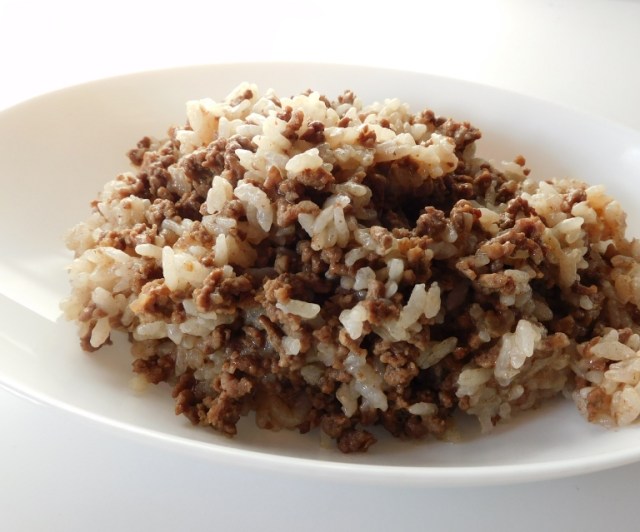
”It’s super easy and soaked with umami!”
So the other day, my Japanese coworker Seiji Nakazawa and I were discussing pita bread, as cultured individuals are apt to do. “They’re kind of messy to eat, but I really like kebab pita sandwiches,” he said, and I had to agree. “Yeah, they’re great aren’t they? I sometimes put hushwee in a pita and eat it like a sandwich too.”
Obviously, we were both technically supposed to be working at that time, and since there was no way of knowing when our boss was going to be back from whatever his latest crazy scheme was, we had to cut the conversation short. About half an hour later, though, I got a message from Seiji in my inbox asking “So what’s this hushwee stuff?” I thought about it for a second, trying to think if there was any similar kind of Japanese food, and figured the closest approximation was gyudon, or beef bowls, so I told him “You could kind of think of it as Lebanese-style gyudon.”
Now Seiji’s interest was piqued and his appetite stimulated, and before long I got another message from him. “So I’ve been looking online for an explanation in Japanese for how to make it, but I’m coming up empty,” he said. “Do you have a link?” I told him I didn’t…but what I did have was my family recipe.
Ingredients
● Ground beef (450 grams [15.9 ounces])
● Rice (360 milliliters [12.2 ounces])
● Chicken broth (780 milliliters [26.4 ounces])
● Cinnamon (2.6 teaspoons)

“Most of the ground meat at supermarkets in Japan is a mix of beef and pork, and sometimes they don’t have a lot of 100-percent beef packs. Is that OK?”
.

.

“How about the rice? Can I use Japanese rice?”
.

.

“And cinnamon? That much seems like a lot.”
.

“Yep, gotta have the cinnamon. It’s not hushwee without it.”
.

“OK, so what do I do with everything?”
.

.

“Gotcha.”
.

“Next, toss the uncooked rice into the pot.”
.

“OK. And the chicken broth?”
.

“Into the pot. If you’re using consommé cubes, pour in the water here too.”
.

“And the cinnamon?”
.

“You guessed it – into the pot!”
.

“And you’re sure about all that cinnamon?”
.

“Positive. You can probably go up to three teaspoons, actually, but don’t use much more than that, or it might burn during cooking.”
.


“Ah, it’s kind of like making takikomigohan [Japanese stewed rice dishes]!”
.
And about 25 minutes later, Seiji was ready to eat!
So what were Seiji’s impressions?
“The umami from the beef soaks all through the rice, and it reminded me of a meaty takikomigohan. But then when you go in for a bite, and the scent of the cinnamon drifts up and the spice hits your taste buds, it’s like ‘Ah, Lebanon!’ It was super easy to make, basically only two cooking steps, really delicious, and added some international atmosphere to my dinner table.”
Glad to be of help, Seiji, and it’s the least I can do to say thanks for the secret soba and phantom curry recommendations you’ve given us.
Photos © SoraNews24
● Want to hear about SoraNews24’s latest articles as soon as they’re published? Follow us on Facebook and Twitter!

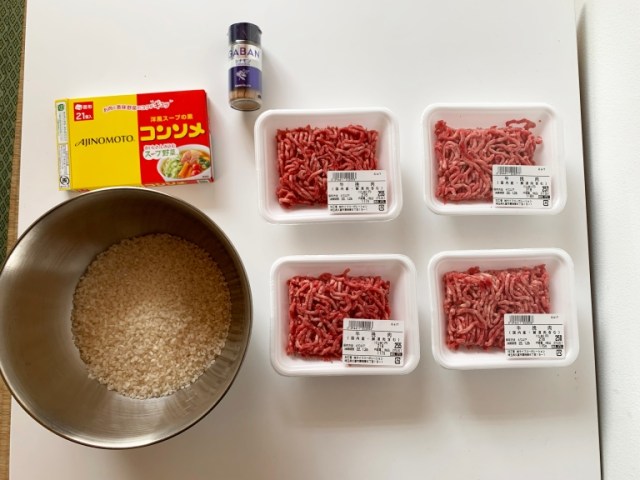
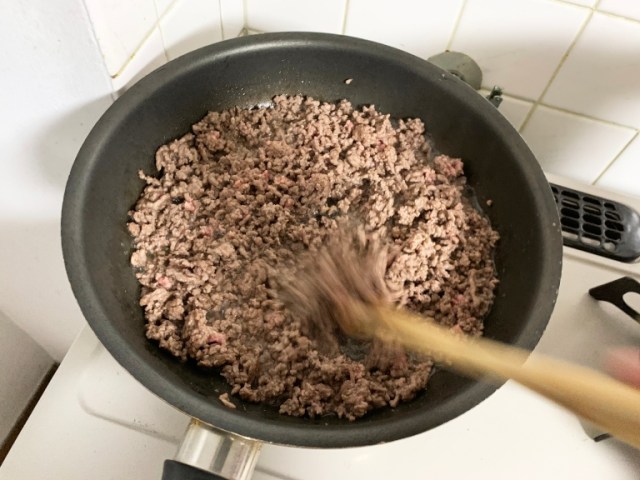
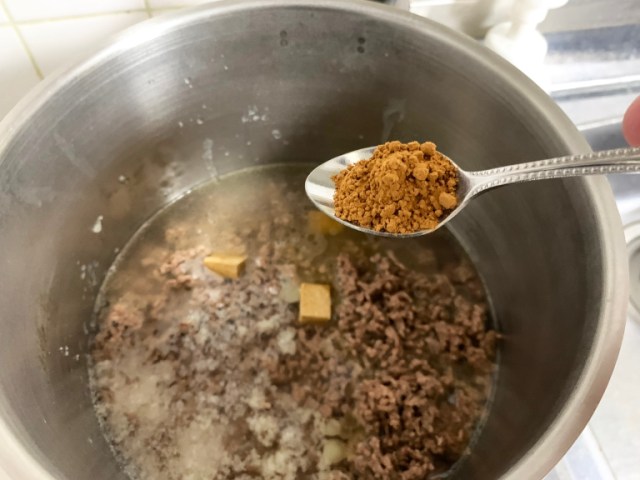
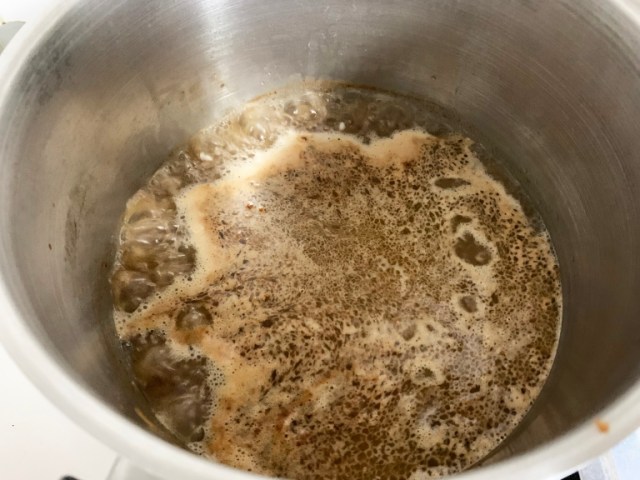
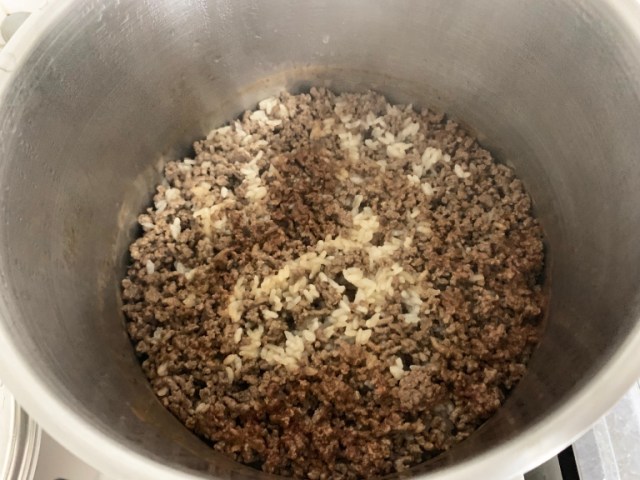
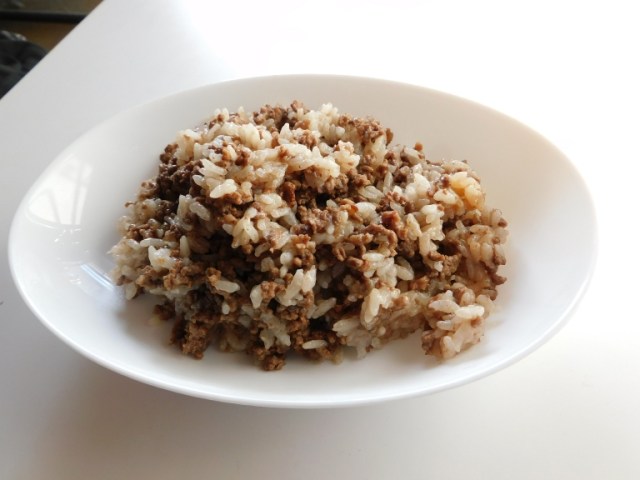
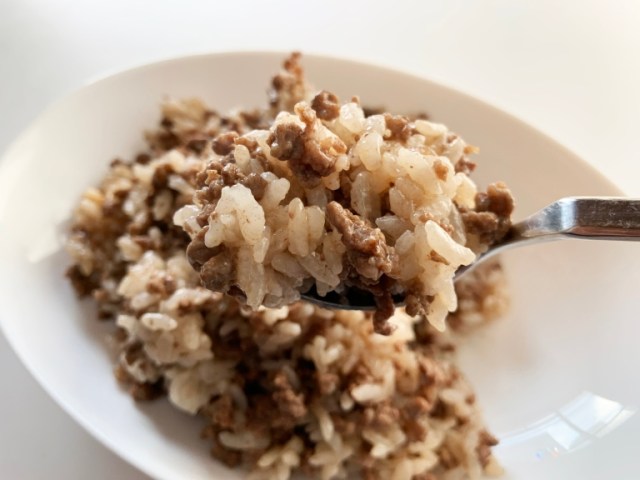
 Does US$50 canned wagyu beef make for a great beef bowl? We find out【Taste test】
Does US$50 canned wagyu beef make for a great beef bowl? We find out【Taste test】 Canned bento?!? We try out a cheaper alternative to canned Yoshinoya【Taste test】
Canned bento?!? We try out a cheaper alternative to canned Yoshinoya【Taste test】 Does Tokyo’s King of Tonkatsu live up to its name? We find out 【Taste Test】
Does Tokyo’s King of Tonkatsu live up to its name? We find out 【Taste Test】 Crazy expensive “phantom beef” instant curry — Dream come true or edible nightmare?【Taste test】
Crazy expensive “phantom beef” instant curry — Dream come true or edible nightmare?【Taste test】 Try this netizen’s “secret menu” item beef bowl at Yoshinoya, if only to see what the heck it’s about
Try this netizen’s “secret menu” item beef bowl at Yoshinoya, if only to see what the heck it’s about McDonald’s new Happy Meals offer up cute and practical Sanrio lifestyle goods
McDonald’s new Happy Meals offer up cute and practical Sanrio lifestyle goods Historical figures get manga makeovers from artists of Spy x Family, My Hero Academia and more
Historical figures get manga makeovers from artists of Spy x Family, My Hero Academia and more Red light district sushi restaurant in Tokyo shows us just how wrong we were about it
Red light district sushi restaurant in Tokyo shows us just how wrong we were about it Japanese ramen restaurants under pressure from new yen banknotes
Japanese ramen restaurants under pressure from new yen banknotes French Fries Bread in Tokyo’s Shibuya becomes a hit on social media
French Fries Bread in Tokyo’s Shibuya becomes a hit on social media Beautiful Red and Blue Star luxury trains set to be Japan’s new Hokkaido travel stars
Beautiful Red and Blue Star luxury trains set to be Japan’s new Hokkaido travel stars Daiso opens massive new 25,392-square foot Tokyo flagship store with its two sub-brands included
Daiso opens massive new 25,392-square foot Tokyo flagship store with its two sub-brands included We try out “Chan Ramen”, an underground type of ramen popular in the ramen community
We try out “Chan Ramen”, an underground type of ramen popular in the ramen community Tokyo Tsukiji fish market site to be redeveloped with 50,000-seat stadium, hotel, shopping center
Tokyo Tsukiji fish market site to be redeveloped with 50,000-seat stadium, hotel, shopping center Kyoto’s 100 Demons yokai monster parade returns!
Kyoto’s 100 Demons yokai monster parade returns! All-you-can-drink Starbucks and amazing views part of Tokyo’s new 170 meter-high sky lounge
All-you-can-drink Starbucks and amazing views part of Tokyo’s new 170 meter-high sky lounge Studio Ghibli releases new action figures featuring Nausicaä of the Valley of the Wind characters
Studio Ghibli releases new action figures featuring Nausicaä of the Valley of the Wind characters New private rooms on Tokaido Shinkansen change the way we travel from Tokyo to Kyoto
New private rooms on Tokaido Shinkansen change the way we travel from Tokyo to Kyoto Studio Ghibli glasses cases let anime characters keep an eye on your spectacles
Studio Ghibli glasses cases let anime characters keep an eye on your spectacles Beautiful Ghibli sealing wax kits let you create accessories and elegant letter decorations【Pics】
Beautiful Ghibli sealing wax kits let you create accessories and elegant letter decorations【Pics】 Studio Ghibli releases Kiki’s Delivery Service chocolate cake pouches in Japan
Studio Ghibli releases Kiki’s Delivery Service chocolate cake pouches in Japan New definition of “Japanese whiskey” goes into effect to prevent fakes from fooling overseas buyers
New definition of “Japanese whiskey” goes into effect to prevent fakes from fooling overseas buyers Our Japanese reporter visits Costco in the U.S., finds super American and very Japanese things
Our Japanese reporter visits Costco in the U.S., finds super American and very Japanese things Studio Ghibli unveils Mother’s Day gift set that captures the love in My Neighbour Totoro
Studio Ghibli unveils Mother’s Day gift set that captures the love in My Neighbour Totoro New Japanese KitKat flavour stars Sanrio characters, including Hello Kitty
New Japanese KitKat flavour stars Sanrio characters, including Hello Kitty More foreign tourists than ever before in history visited Japan last month
More foreign tourists than ever before in history visited Japan last month New Pokémon cakes let you eat your way through Pikachu and all the Eevee evolutions
New Pokémon cakes let you eat your way through Pikachu and all the Eevee evolutions Sales of Japan’s most convenient train ticket/shopping payment cards suspended indefinitely
Sales of Japan’s most convenient train ticket/shopping payment cards suspended indefinitely Sold-out Studio Ghibli desktop humidifiers are back so Totoro can help you through the dry season
Sold-out Studio Ghibli desktop humidifiers are back so Totoro can help you through the dry season Japanese government to make first change to romanization spelling rules since the 1950s
Japanese government to make first change to romanization spelling rules since the 1950s Ghibli founders Toshio Suzuki and Hayao Miyazaki contribute to Japanese whisky Totoro label design
Ghibli founders Toshio Suzuki and Hayao Miyazaki contribute to Japanese whisky Totoro label design Doraemon found buried at sea as scene from 1993 anime becomes real life【Photos】
Doraemon found buried at sea as scene from 1993 anime becomes real life【Photos】 Tokyo’s most famous Starbucks is closed
Tokyo’s most famous Starbucks is closed One Piece characters’ nationalities revealed, but fans have mixed opinions
One Piece characters’ nationalities revealed, but fans have mixed opinions We asked a Uniqlo employee what four things we should buy and their suggestions didn’t disappoint
We asked a Uniqlo employee what four things we should buy and their suggestions didn’t disappoint Princesses, fruits, and blacksmiths: Study reveals the 30 most unusual family names in Japan
Princesses, fruits, and blacksmiths: Study reveals the 30 most unusual family names in Japan Watermelon soup? We test out a strangely alluring recipe from Ajinomoto【Recipe】
Watermelon soup? We test out a strangely alluring recipe from Ajinomoto【Recipe】 “Hey, Japanese taxi driver, take us to the best Sapporo ramen place!” – Things don’t go as planned
“Hey, Japanese taxi driver, take us to the best Sapporo ramen place!” – Things don’t go as planned How to have a great meal at conveyer belt sushi chain Kura Sushi even if you hate raw fish
How to have a great meal at conveyer belt sushi chain Kura Sushi even if you hate raw fish Japan’s one-person instant ramen pot may be the one and only cooking gadget we need
Japan’s one-person instant ramen pot may be the one and only cooking gadget we need Make your own Japanese manju snacks with hotcake mix【SoraKitchen】
Make your own Japanese manju snacks with hotcake mix【SoraKitchen】 Big eyes, small face, slender arms and legs…here’s the ideal woman you’ve been praying for!
Big eyes, small face, slender arms and legs…here’s the ideal woman you’ve been praying for! Japan’s new sukiyaki burger tops your burger with more beef all winter long
Japan’s new sukiyaki burger tops your burger with more beef all winter long Convenience Store Private Brand Showdown: Which of Japan’s Big Three has the best beef curry?
Convenience Store Private Brand Showdown: Which of Japan’s Big Three has the best beef curry? What happens when you cook beer with potato chips in a rice cooker?
What happens when you cook beer with potato chips in a rice cooker? Japanese Twitter shares secret ingredient to make perfect pancakes, it’s what you’d least expect
Japanese Twitter shares secret ingredient to make perfect pancakes, it’s what you’d least expect Why throw away your leftover ramen broth when you can use it to make awesome ramen rice instead?
Why throw away your leftover ramen broth when you can use it to make awesome ramen rice instead? We try Burger King Japan’s CooKING Burger @Home, use up lots of stuff in our fridge
We try Burger King Japan’s CooKING Burger @Home, use up lots of stuff in our fridge East meet West in kitchen as Japanese ingredient makes Western-style cream stew more delicious
East meet West in kitchen as Japanese ingredient makes Western-style cream stew more delicious Tokyo bento shop famous for jumbo orders offers a meaty sausage lunch for under 1,000 yen
Tokyo bento shop famous for jumbo orders offers a meaty sausage lunch for under 1,000 yen How to turn Cup Noodle instant ramen into delicious Osaka-style dumplings【SoraKitchen】
How to turn Cup Noodle instant ramen into delicious Osaka-style dumplings【SoraKitchen】
Leave a Reply